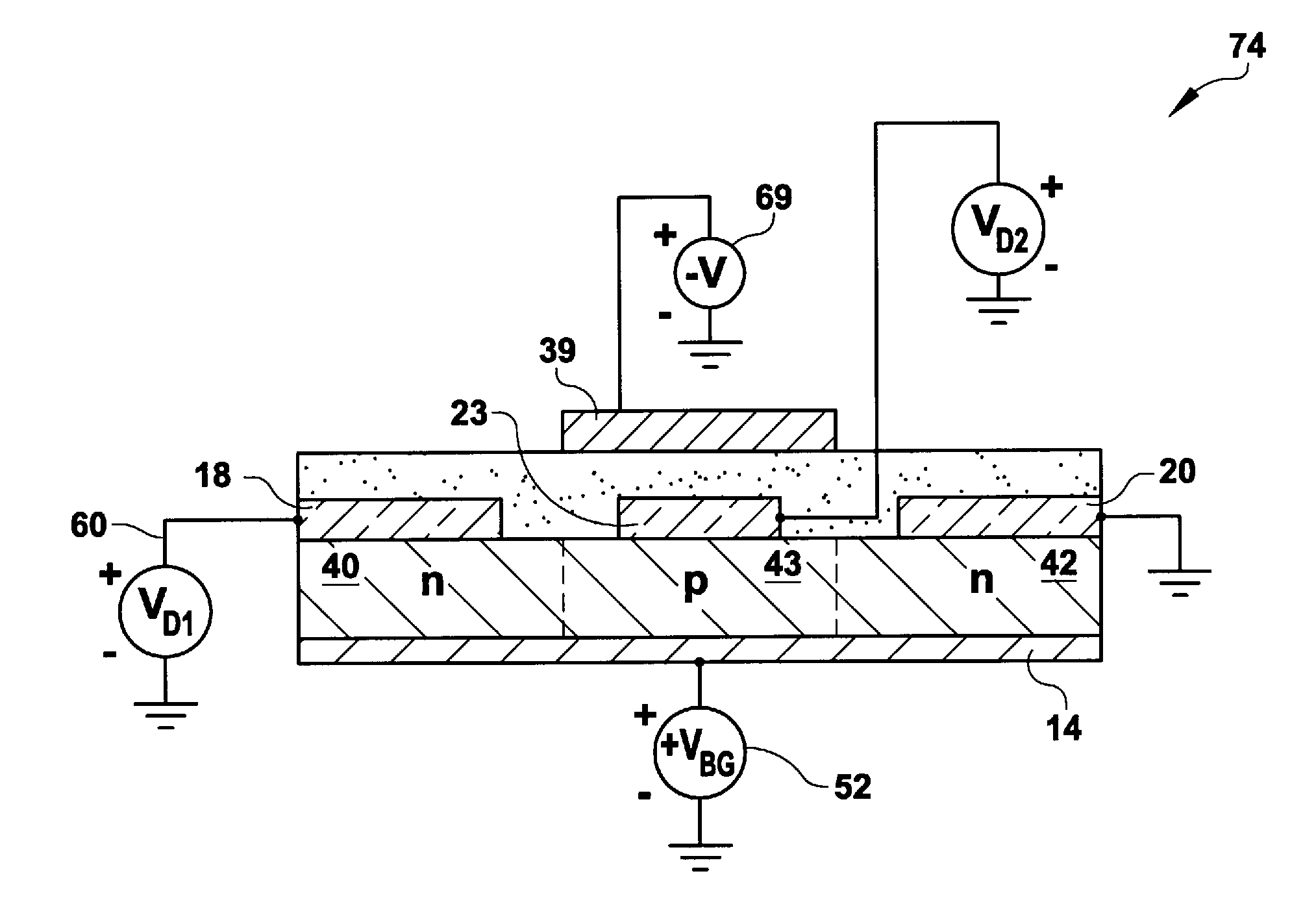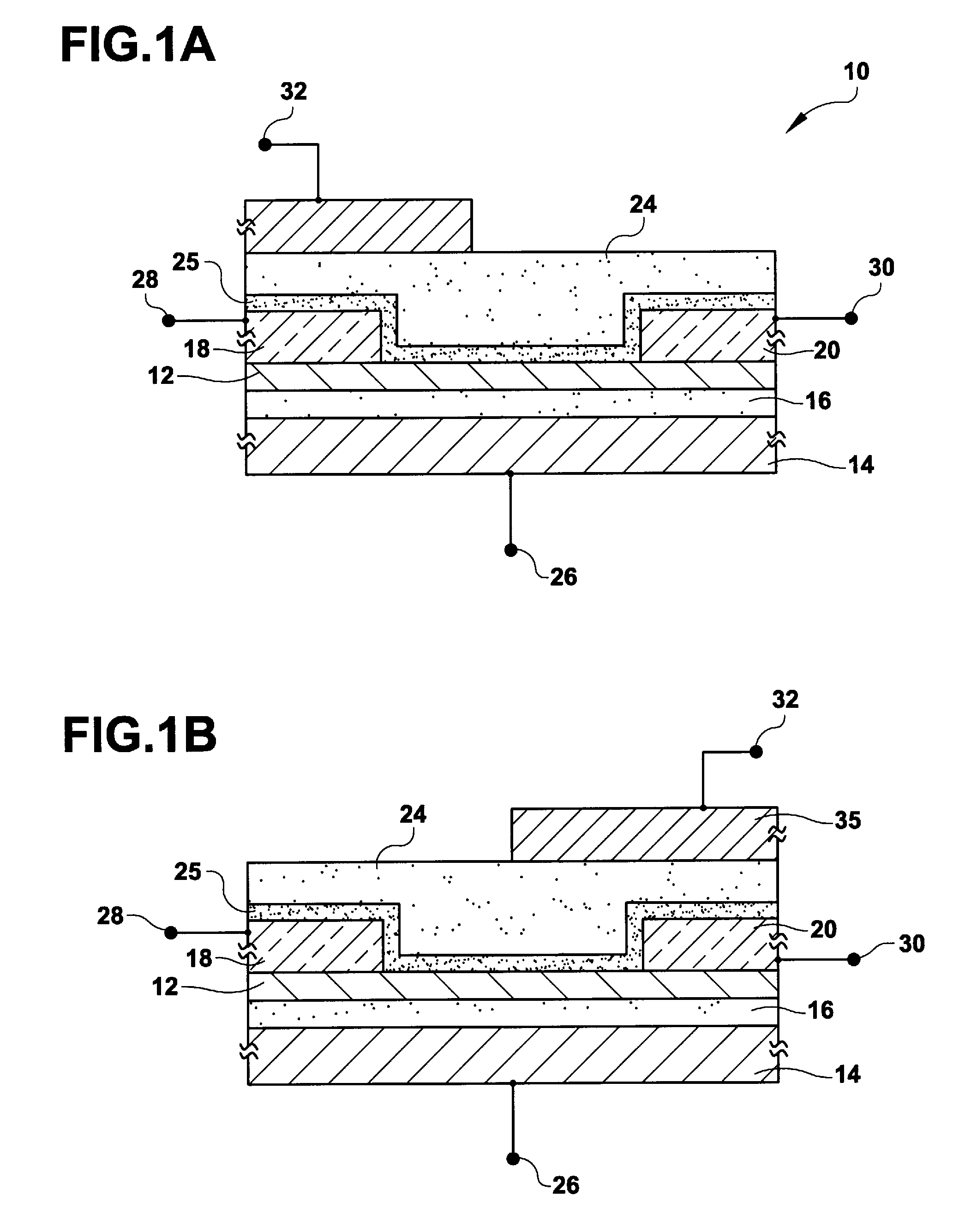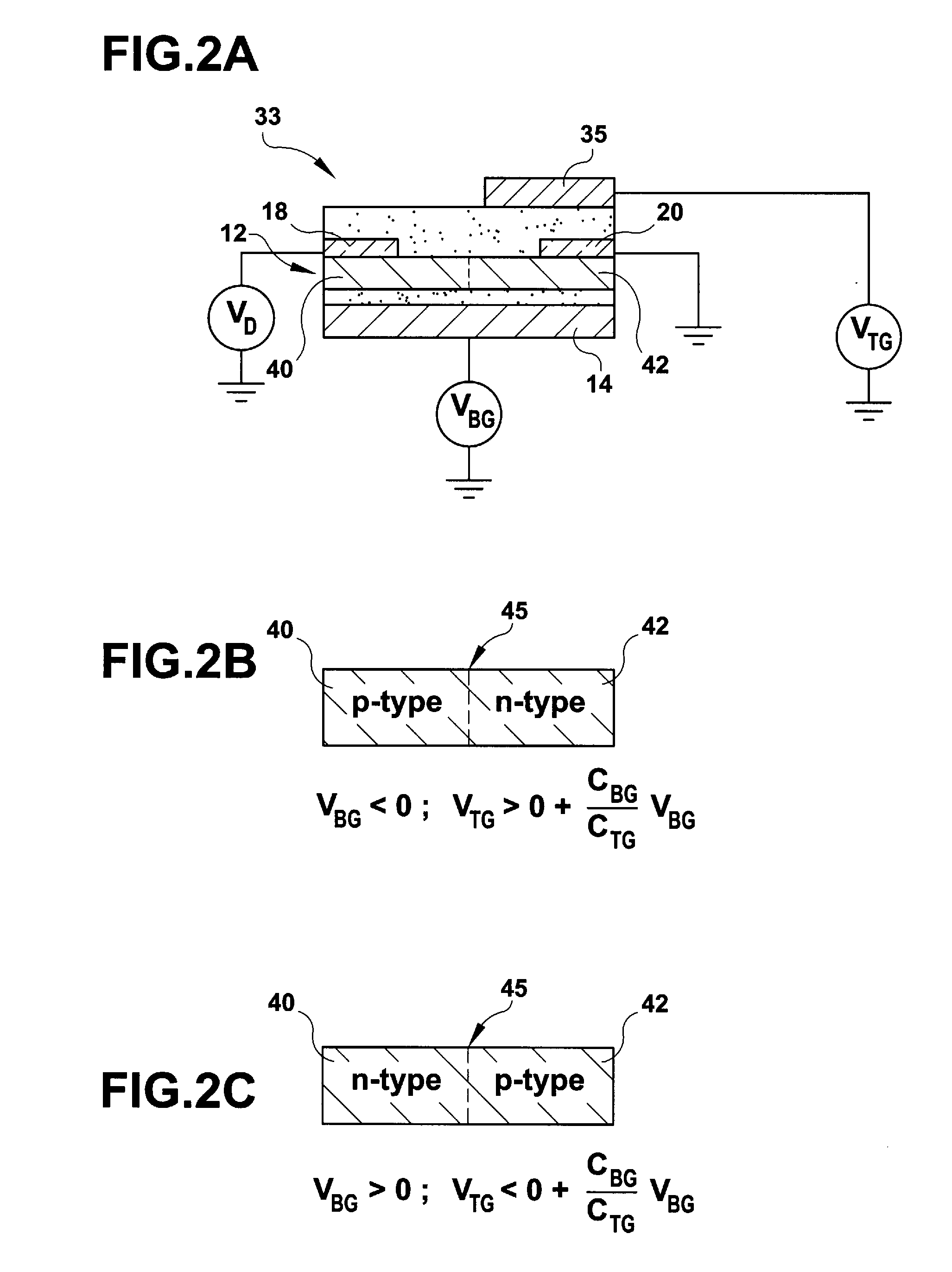Microfabrication of Carbon-based Devices Such as Gate-Controlled Graphene Devices
a technology of carbon-based devices and gate-controlled graphene, which is applied in the field of carbon-based forms, can solve the problems of the state-of-the-art cnt production technology not being able to reliably make cnt of one type or the other
- Summary
- Abstract
- Description
- Claims
- Application Information
AI Technical Summary
Benefits of technology
Problems solved by technology
Method used
Image
Examples
example i
[0077]A semiconducting carbon nanotube was synthesized. and was configured for initial conductance characterization in a pristine state. A source-drain dc transport measurement was made by contacting ends of the nanotube. FIG. 8A is a plot of differential conductance, g, as a function of backgate voltage, V, for the pristine nanotube.
[0078]The carbon nanotube was then processed to form a functionalization layer and an oxide layer on the full circumference and length of the cylindrical sidewall of the nanotube. The nanotube was inserted into an ALD reaction chamber and the chamber was pumped down to a pressure of 0.3 torr. 5 ALD cycles were then conducted at room temperature to form a functionalization layer by the following process. A 100 torr dose of NO2 gas was first introduced into the chamber for 0.5 seconds and then pumped out. Following a 10 second purge under continuous flow of 20 sccm of N2, a 1 torr dose of tetrakis(dimethylamido)hafnium(IV) (TDH) vapor was pulsed into the ...
example ii
[0081]A graphene device having the configuration of FIG. 1A was microfabricated in accordance with the invention. A 300 nm-thick layer of SiO2 was thermally grown on a degenerately doped Si wafer. Graphene was exfoliated with a taping technique and applied to the oxide surface, and was identified by thin-film interference. Two device electrodes were formed by electron beam lithography and lift off with layers of titanium and gold, of 5 nm and 40 nm in thickness, respectively. A functionalization layer was then formed by the ALD process described above, employing 50 pulsed cycles of NO2 and TMA at room temperature, in the manner given above. The functionalization layer was then stabilized by a 5-cycle ALD process of H2O and TMA at room temperature, also in the manner given above. An oxide layer of Al2O3 was then formed over the stabilized functionalization layer by 300 ALD cycles of pulsed H2O / TMA, at a temperature of about 225° C., yielding an oxide thickness of about 30 nm. To comp...
PUM
 Login to View More
Login to View More Abstract
Description
Claims
Application Information
 Login to View More
Login to View More - R&D
- Intellectual Property
- Life Sciences
- Materials
- Tech Scout
- Unparalleled Data Quality
- Higher Quality Content
- 60% Fewer Hallucinations
Browse by: Latest US Patents, China's latest patents, Technical Efficacy Thesaurus, Application Domain, Technology Topic, Popular Technical Reports.
© 2025 PatSnap. All rights reserved.Legal|Privacy policy|Modern Slavery Act Transparency Statement|Sitemap|About US| Contact US: help@patsnap.com



